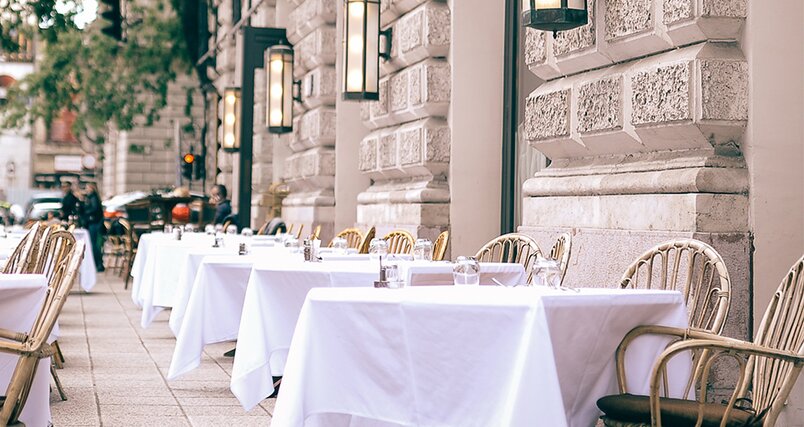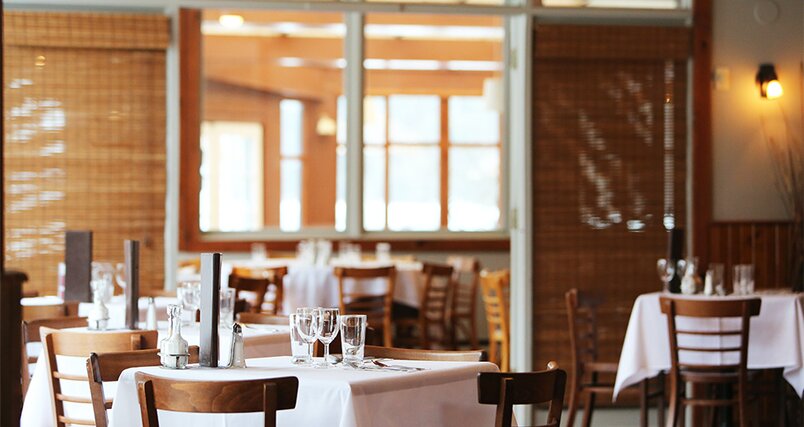Since the corona pandemic, every second German occasionally orders food home via the Internet. One in five uses online platforms or apps from well-known delivery services such as Lieferando. (Source: Bitkom). Even though the corona restrictions have now been largely eliminated and gastronomy has returned to business as usual, the trend for food deliveries appears to be here to stay.
Restaurateurs who want to expand their business model in this way are faced with the decision of whether they should use a third-party delivery service or whether it is more economical to establish their own delivery service.
Pros and cons of third-party delivery services
Well-known delivery services like Lieferando, Uber Eats or Wolt offer a few advantages. They have a wide reach and a large customer base, which allows restaurants to attract a large number of new customers. In particular, newly established gastronomic businesses without a high degree of brand awareness benefit from this. Another benefit of third-party delivery services is that the entire infrastructure for the delivery process is provided. Thus, restaurateurs do not have to worry about a delivery person, an ordering platform, or billing customers. This reduces the administrative effort while increasing sales.
However, despite many benefits, the use of third-party delivery services also brings some disadvantages for restaurateurs. In particular, the high commission is a critical factor. A fee of 15 to 30 percent is usually charged per order. This depends on the individual delivery provider as well as whether the restaurant delivers itself or has the delivery service do the delivery. Many restaurateurs understandably worry about their dependence on third-party delivery services and their commissions. It is therefore advisable to carefully compare the conditions of the delivery services before starting any cooperation.
Your own delivery service: How to create a concept that pays off?
In order to become more independent of third-party providers, retain full control over operations and avoid the high commission payments, restaurateurs can set up their own delivery service for their restaurant. This process involves significantly more planning, analysis, budget and time in the beginning. However, for many companies the investment proves to be worthwhile in the long term.
In order for your restaurant delivery service to be a success, you should first develop a well thought-out concept. The following eight tips will help with planning and implementation:
- First, get an overview of your competition by analyzing their offers, prices and menus. What is the level of awareness in each case, how long is the delivery time? A look at review portals can also provide a lot of insight about your competitors.
- Define the size of your catchment area. Too large an area can result in very long waits for your customers at peak times, while too small an area will produce too few orders – so choose wisely here.
- Analyze your target group carefully and check if it matches the choice of your catchment area.
- Whether cars, scooters or bicycles – decide which delivery vehicles should be used to deliver your orders. Especially bicycles or e-bikes are a comparatively inexpensive and environmentally friendly delivery method.
- Make sure you have enough staff to handle the ordering and delivery processes.
- Order suitable packaging and transport containers so that your dishes arrive fresh and warm at your customers. With regard to the environment, sustainable disposable tableware is recommended, such as that from the BAGASSE collection by Playground.
- When selecting the ordering system, consider ease of use, straightforward payment processing, and the availability of delivery tracking.
- Market your delivery offering not only with a digital menu on your website, but also with other online advertising efforts via social media, Google Ads, or placement on other platforms to reach as many customers as possible.
Conclusion: At what point is it worthwhile to have your own delivery service?
Both third-party delivery services and an in-house delivery service for your restaurant have their advantages and disadvantages. Although third-party delivery services are usually quick to set up and the less complicated choice, in the long run they add high costs and shrink the operation's profits.
Therefore, before making a decision, consider whether your gastronomic concept is at all suitable for deliveries and whether your food will still generate sufficient margin after delivery. If you are able to bear the initial investment, you will enjoy more individuality and independence with your own delivery service.











